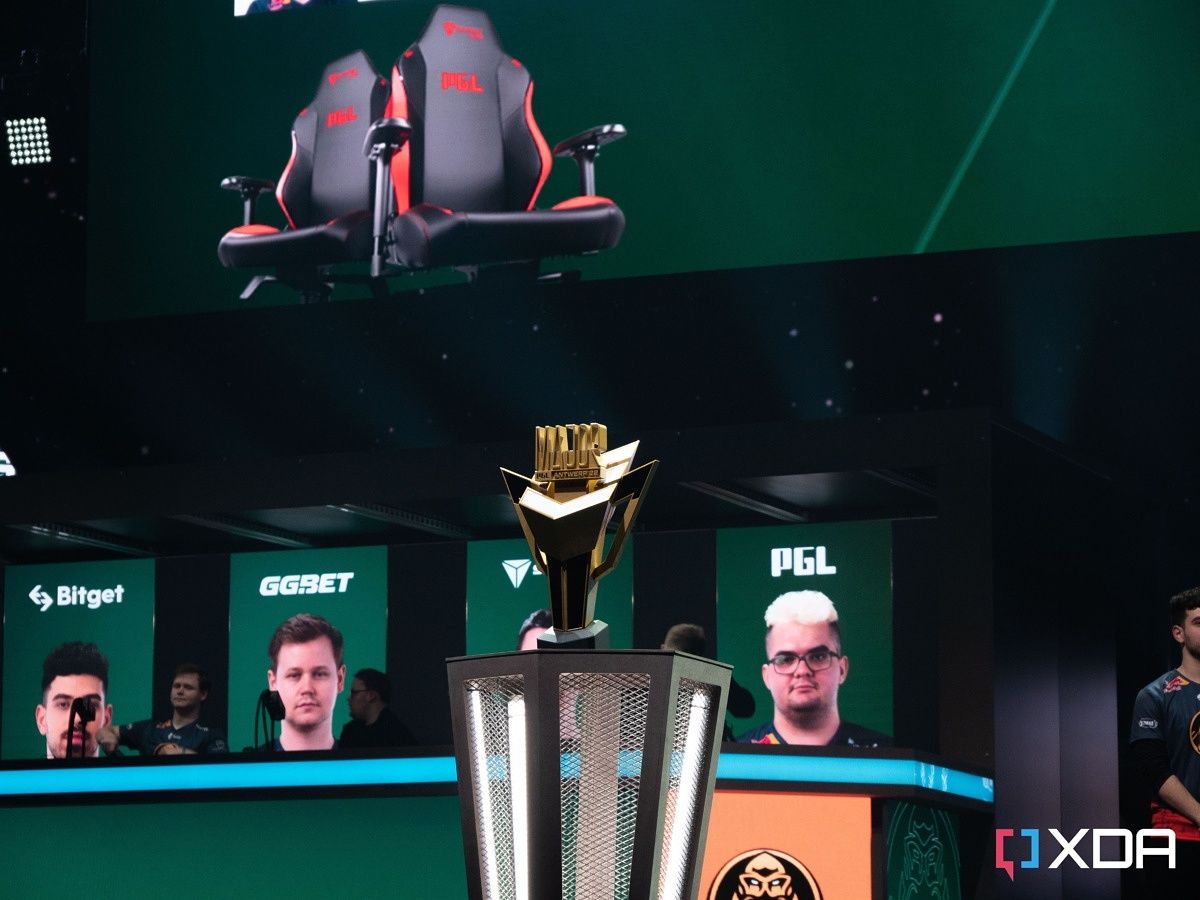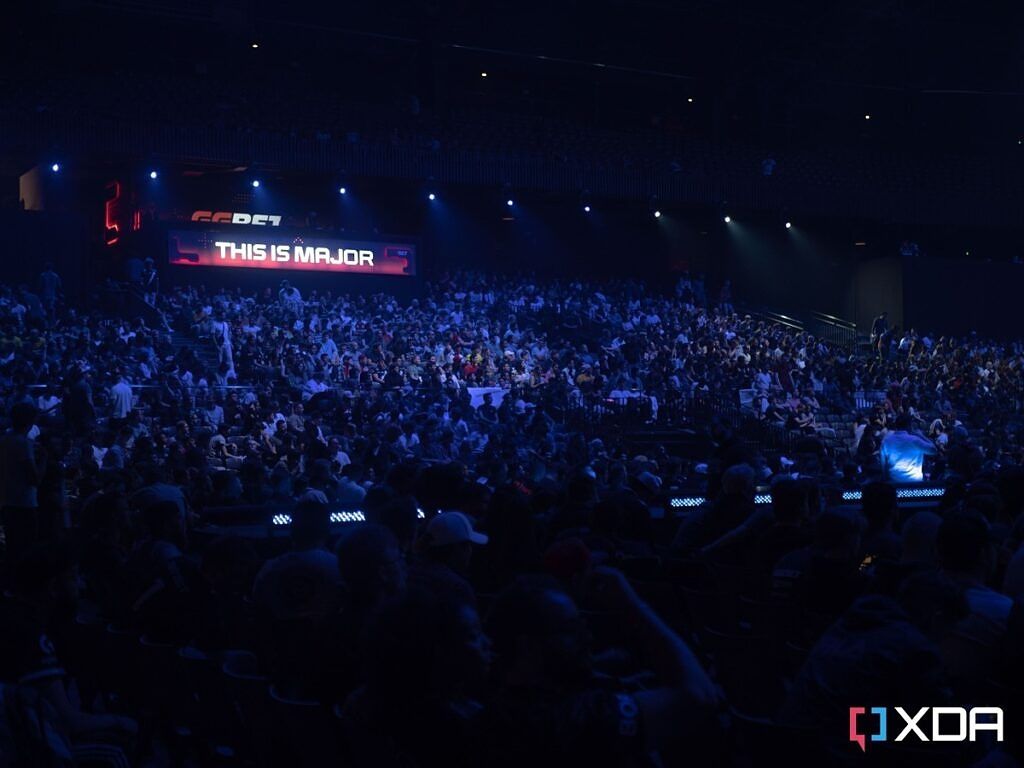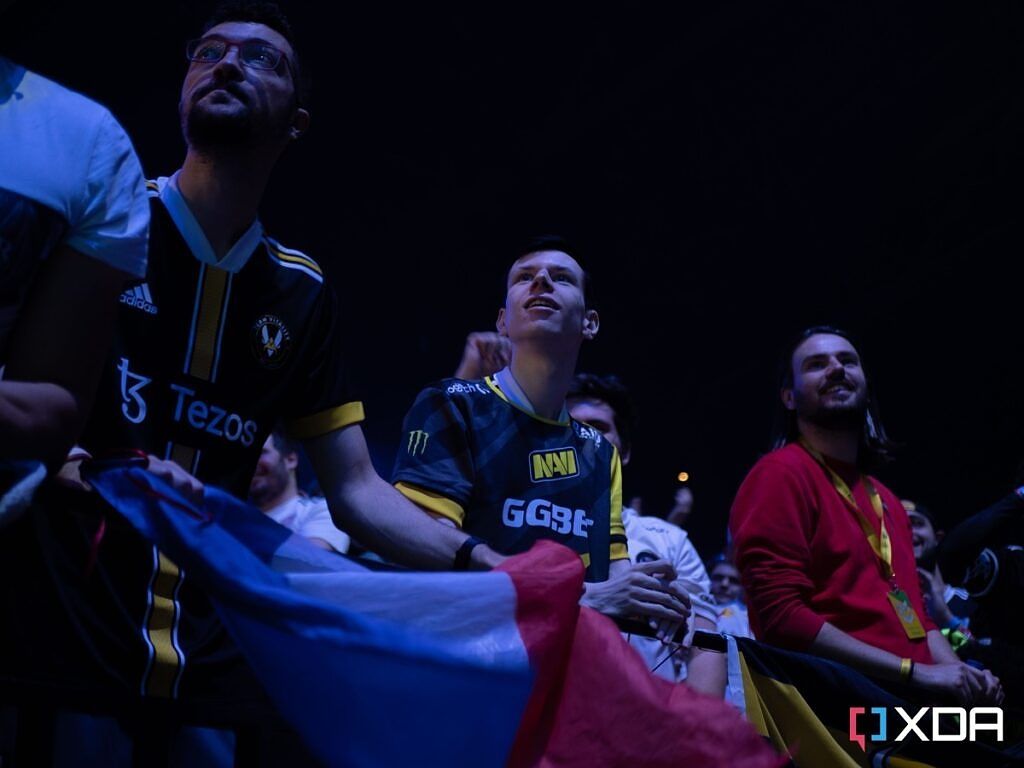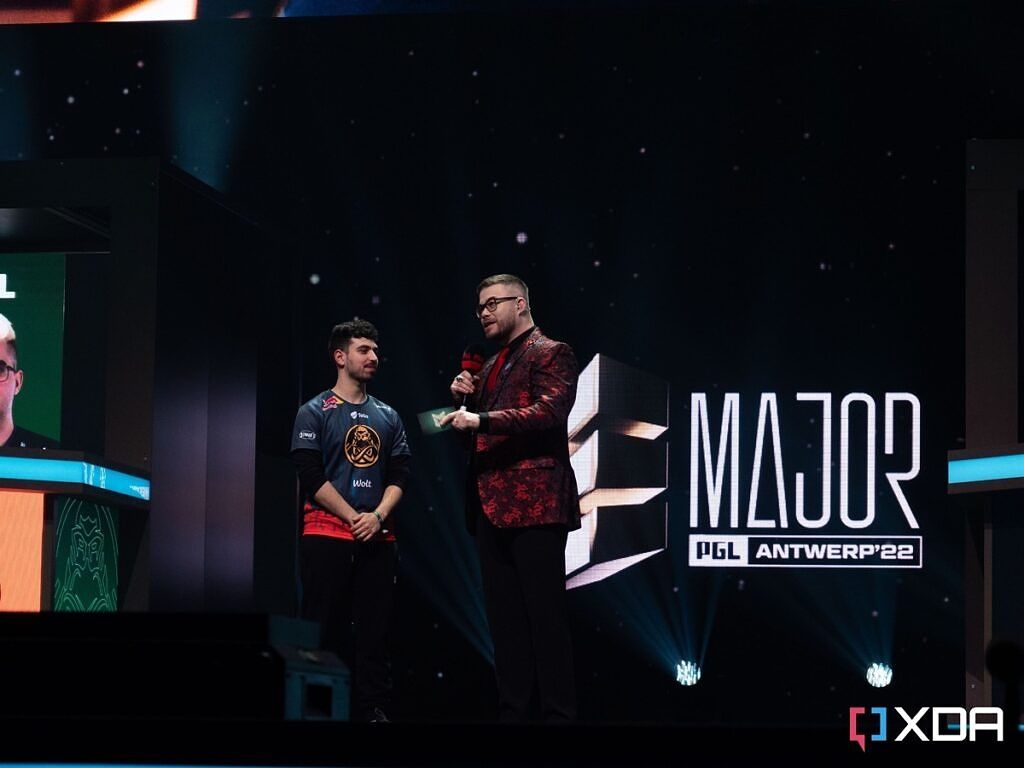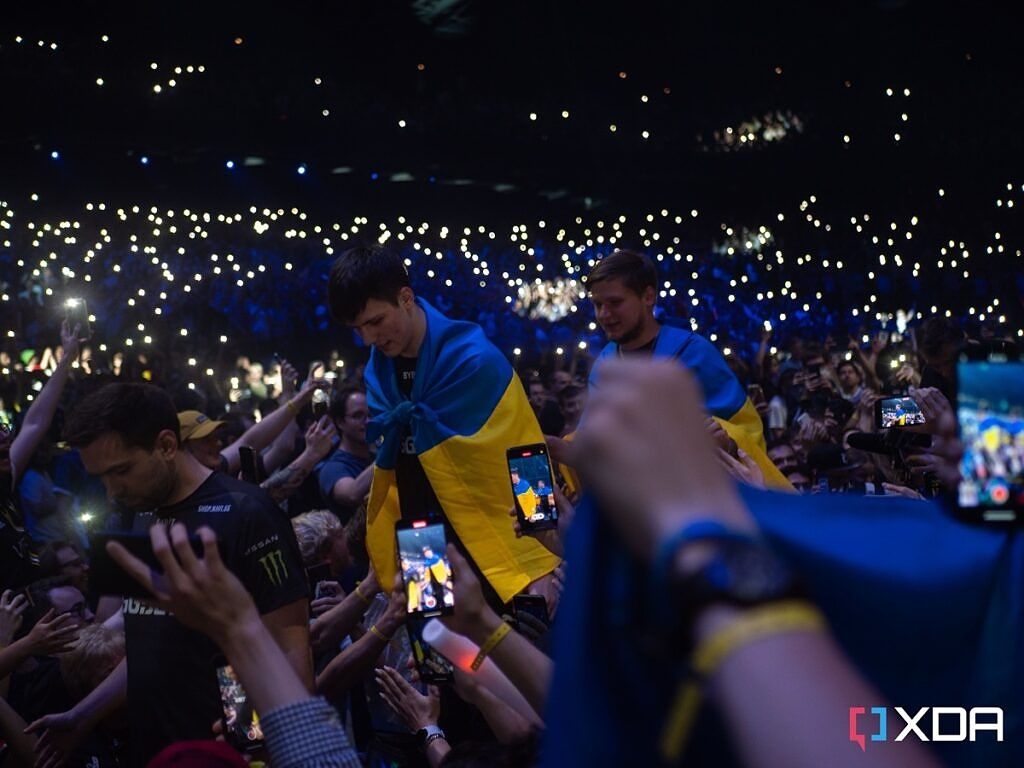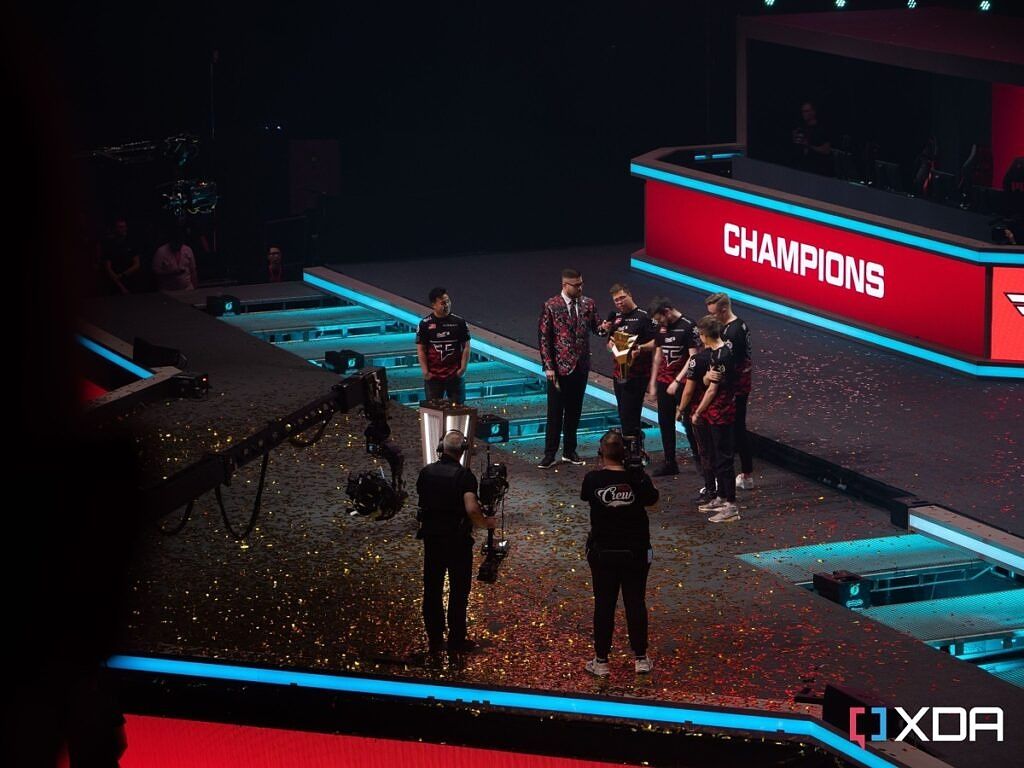We all know video games, and most of us have probably had a favorite game that we've known for years and years. Whether that's iterations of Pokemon, Call of Duty, or even mobile-only titles, there shouldn't be any gatekeeping when it comes to defining what a "gamer" is. For me, that game is Counter-Strike, and I've been playing it since shortly before Counter-Strike: Global Offensive came out. Over the weekend, I had the pleasure of attending the Counter-Strike PGL Major in Antwerp, and it was an incredible event.
For context, Counter-Strike is one of the oldest esports titles on the planet. Its initial beta version was released in June of 1999 as a modification of the original Half-Life, and it later became a standalone title. Since then, Valve has released two more main entries to the series; Counter-Strike: Source in 2004, and Counter-Strike: Global Offensive in 2012. Global Offensive's aim was to merge the communities of the two previous games, as a divide had emerged with some players believing that the original Counter-Strike was superior to the version released in 2004.
With the release of Global Offensive, Valve announced the first "major" tournament to take place in November of 2013. Major tournaments are Valve-sponsored events with direct in-game integration, with official streams to watch in-game, item drops from watching maps, sticker capsules to support your favorite teams, and more. It's a level of integration no other tournament gets, and they've been deemed the most important tournaments of the year with some of the largest prize pools. The PGL Major in Antwerp was the latest in a long-running series of major tournaments, and it was an incredible experience to get to attend.
PGL Major tournament structure
The PGL Major started on the 9th of May and was split into three stages. The first is the "New Challengers" stage, the second is the "New Legends" stage, and the third and final one is the "New Champions" stage. These first two stages take place in a closed-off environment in a studio, whereas the "New Champions" stage is what takes place in the arena.
The "New Champions" stage took place in the Sportpaleis, an arena in Antwerp, a city just north of Brussels in Belgium. The Sportpaleis is a massive venue capable of holding somewhere in the range of 15,000 to 18,000 people, and tickets had completely sold out for the weekend. There were two rings of seats around the event, with an upper balcony and a lower seated area. As well, there were the floor seats, which went right up to the barrier at the stage and surrounded the center podium that was used for interviewers and the entrance for the finalists.
My first day of attendance was Friday, having flown into Brussels airport and taking a train straight to Antwerp. From there, it was easy to get to the event, and I was able to see the second day of the quarter-finals. While the venue wasn't as full as it was at the weekend, the crowd was already loud, excited, and having a great time.
The Antwerp experience
Antwerp, a city I had never been to before, felt like a familiar community because of the number of familiar faces I saw when I was walking around. I bumped into friends in the most random of places; from the famous shopping street of Meir to a dockland far away from the arena. It felt very much like a Counter-Strike city, rather than a European city. Everywhere you went there were people wearing the jerseys of some of the best teams, including ENCE, Natus Vincere, and Faze Clan.
As for the arena, it was one of the most surreal experiences I have ever had. Fans were chanting constantly; cheering and shouting even when games weren't live. People were just happy to be there, and I met several people that I had played with online but had never gotten to meet in real life before.
The Golden Hornets, a French support group for Team Vitality, were present even though Team Vitality had been knocked out prior to the event moving to the arena. They were some of the loudest and most excited fans, with many of them powering the crowd with chants and drums.
Fans could participate in lots of events around the arena too, including a two versus two tournaments sponsored by Red Bull. PGL also created different pieces of content over the days of the event, including interviewing fans to use in montages to build up hype before the final. It was an expertly crafted story-building technique and made the hours of waiting before the final an enjoyable experience.
In Counter-Strike major finals, it's also customary for the tournament organizer to arrange for a show match prior to the final. It's a lot less serious, with players from random teams and sometimes even commentators thrown into a 5v5 game live on stage. Those matches tend to be short, but they're a lot of fun for both the players and the spectators.
The crowd was fantastic for it, as whenever a "normal" gun was purchased during the show match, the crowd jokingly booed at the players. There was a lot of crowd interaction, and Frankie Ward and James Banks, two of the most pedigreed hosts and interviewers in Counter-Strike, served as the coaches of both of the show match teams.
Both Frankie and James were hyping up the crowd and having a good time, and it was a great way for everyone to have a laugh before the final kicked off later that day.
The PGL Antwerp Major final
The finals themselves were completely chaotic. Natus Vincere (Navi) faced off against Faze Clan, the number one and number two teams in the world, respectively. Both teams walked down the center stage through the crowd, high-fiving fans as they did. Valerii "b1t" Vakhovskyi and Oleksandr "s1mple" Kostyliev, two Ukrainian players for Natus Vincere, were wrapped in Ukrainian flags. s1mple is widely considered to be the best player to have ever played any iteration of Counter-Strike, and b1t is one of the best talents currently playing at the top level. He was rated the ninth-best player in the world last year at the age of 18, winning his first major tournament ever and without his team losing a single map.
Support for both sides was completely mixed in the arena, with back and forth chants going on for much of the game. As well, a large group of fans had also traveled from Brazil, despite the top Brazilian teams also having been eliminated in prior stages of the tournament. I asked one of them who they were cheering for, and they said that they were just happy to be there and watch the best players in the world. That's what everyone was there for really.
While the series was a best of three that was over in two maps, it was an incredibly tense game that delivered one of the best finals in the last few years. Faze Clan is the first completely international team to win a major tournament, with the players being from Denmark, Estonia, Canada, Norway, and Latvia.
After the final, the players of Faze were interviewed by James Banks, and it was hard to understand what was being said as fans continued to cheer, chant, and clap. It was a completely electric experience, and the players were celebrating with the crowd and thanking them for their support.
It's events like these that show what esports is all about, and it's why I love Counter-Strike as much as I do. The fans and the talent involved in its production have always been fantastic, and in Ireland, the community is one that I spend a lot of time on. Some of the best friends I've ever made have been through the game, and in Antwerp, thousands of fans came together with that one game in common.
The future of Counter-Strike and esports
The future of Counter-Strike and esports as a whole looks incredibly bright. At the event, tournament-platform FACEIT announced that it was partnering with luxury brand Gucci in order to launch a new program with the aim to scout, develop, and support up-and-coming players. As major brands like Gucci enter the sphere, it legitimizes the scene as a whole and builds up confidence on a global level. There's a lot of money and talent in esports, and with the ability to pull in huge crowds and huge viewership, there's no reason why it can't grow even more.
As for me, I had an amazing time at the event. It was one of the best crowds I've ever been a part of, and I had an amazing weekend with friends, both new and old. With the tournament structured to host games in the evening too, fans had plenty of time to walk around Antwerp and check out nearby sights. On Monday before I flew home, I was able to go to Brussels-Luxembourg and check out the European Union parliament in just a handful of hours. A lot of these tournament providers actually partner with the cities that they host in and the mayor of Antwerp introduced the crowd on the final day. It's as much a boon for tourism in the city as it is an event for fans to attend.
All in all, I'm looking forward to attending more tournaments in the future, and I can't wait to see what the future of esports holds.

